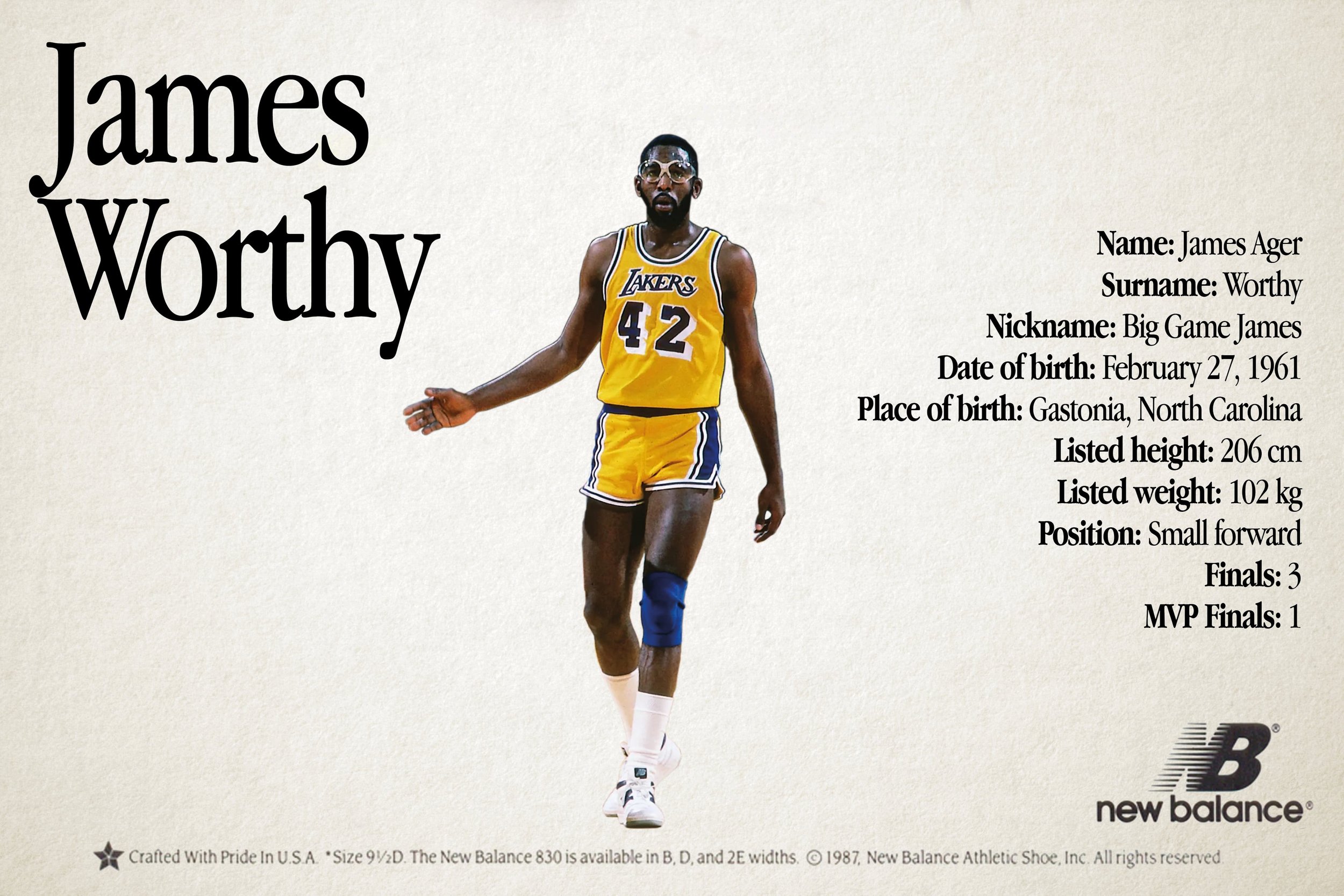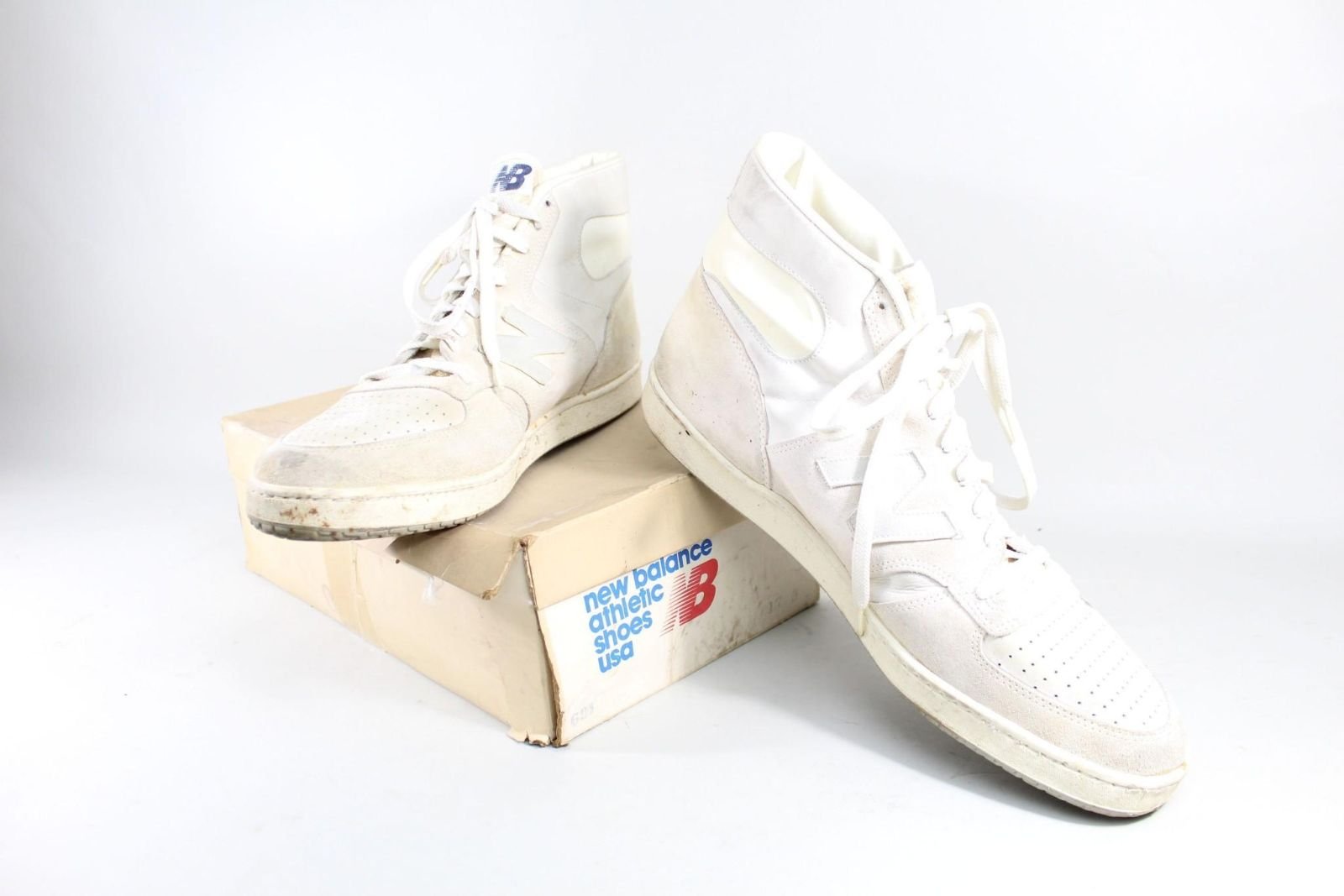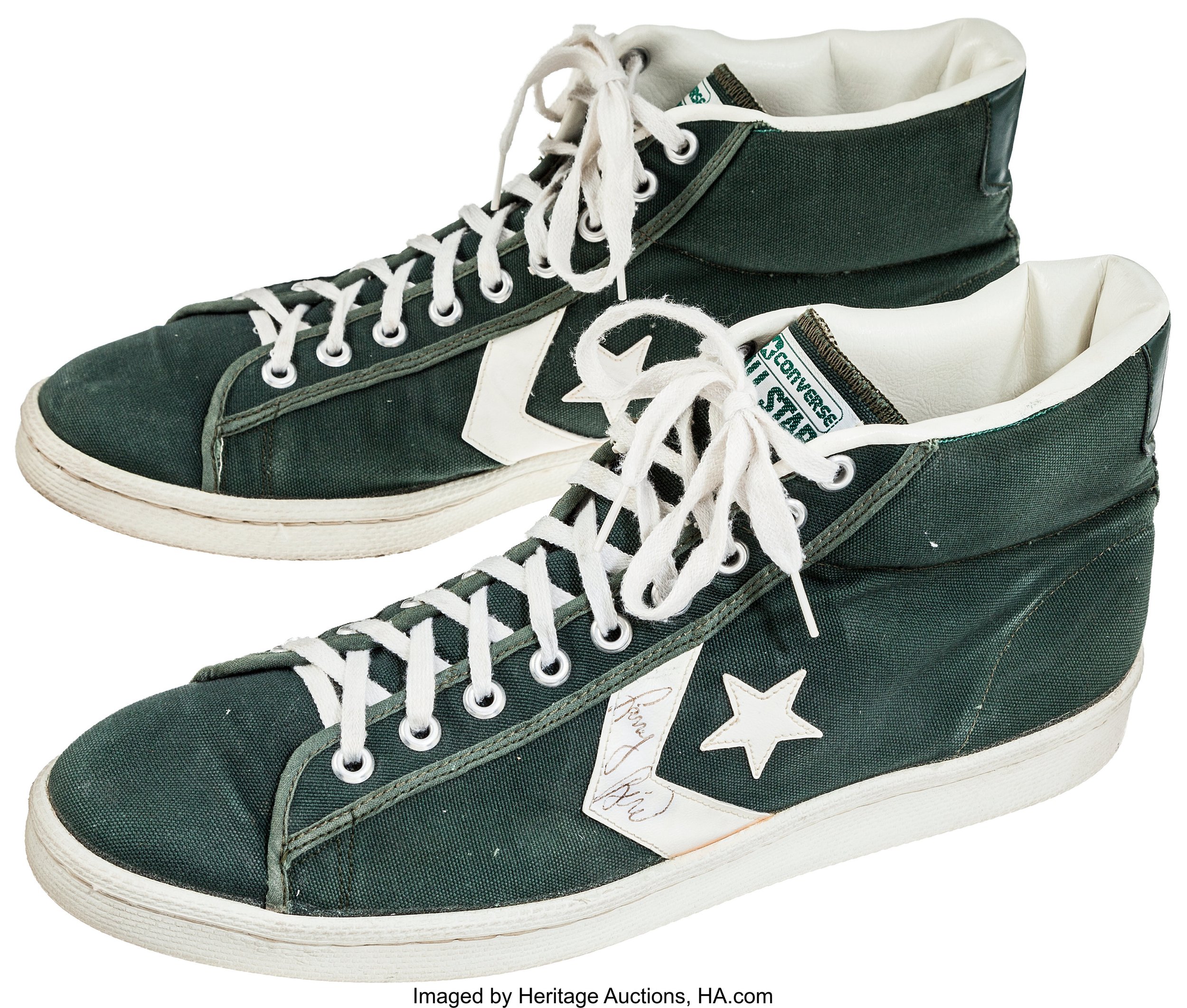Worthy, Bird, and the Curious Case of Kareem’s New Balance
The story that came with a pair of shoes in Public Sale’s upcoming auction was that a school janitor found them in a locker room after a benefit game in which Kareem Abdul-Jabaar had played. But trying to confirm this provenance, and following the trail of clues, doesn’t offer any definitive proof to the story. It does, however, give glimpses into the history of sneakers and basketball that somehow only add to the allure of these mysterious shoes.
Maybe the most obvious place to start is to look at the size of the shoes. Kareem was known to wear size 16–17 sneakers. These shoes are a size 17D. (D is standard width in US men’s sizes.). The shoe, it would seem, fits.
Where our investigation gets tripped up, however, is not the size of the shoes but the brand. Kareem famously wore Adidas sneakers, setting the record in 1969 for the biggest endorsement deal ($25,000) in NBA history. The shoes in question are a strange unmarked variety of the brand New Balance.
The basketball player most associated with the New Balance brand, however, happens to be Abdul-Jabbar’s Los Angeles Lakers teammate, James Worthy. Worthy was New Balance's first major athlete endorsee of any kind, dwarfing Kareem’s record with a million-dollar contract that set a new record in 1982 for the NBA's highest-paid sneaker endorsement. Worthy would go on to achieve another first, becoming the recipient of New Balance's first “signature” shoe, the P740 “Worthy Express” designed from a custom mold of the athlete’s feet. But before we deem these shoes worthy of another owner, we must return to the matter of size. “Big Game” James wore a size 14. So the sneakers couldn’t have been worn by Worthy, whose notoriously fast-paced playing style—likened in commercials to a “train” and well-fitted to a sneaker brand known for running—would have been difficult in oversized shoes.
But these details do present some interesting scenarios. Perhaps Worthy gave his teammate Abdul-Jabbar a special loaner pair for this specific benefit game? The sneaker model this pair most resembles is indeed the first 740s designed for Worthy. However, they are all white, they have no model number or other identifying markers, and the designs are slightly different. Perhaps they were a prototype that Worthy asked trusted peers—like Kareem—to wear in a low-stakes context—like a benefit game—for feedback?
But before these speculations go too far, we might also ask: When and where might this fabled game have taken place? In 1969, Abdul-Jabbar—then known as Lew Alcindor—made his professional debut in the storied Maurice Stokes benefit game at the famous Kutsher’s Resort in the Catskills of New York. (Alcindor, at the time NYC high school phenom, had been invited by Wilt Chamberlain, who he proceeded to dunk over en route to his team’s thrilling 80–79 victory, in a game that was unusually competitive, for a charity affair.) This date, coming the same year as his first deal with Adidas, fits with the possibility of his wearing off-brand shoes without the involvement of Worthy, whose NBA career didn’t start until 1983. Abdul-Jabbar also flew from LA to NYC to play in a benefit game for the 21st Century Foundation in the Summer of 1975. But New Balance shoes did not feature the now-ubiquitous “N” logo until the company launched its 320 model a year later in 1976. And a search for benefit games played between 1976 and 1989, when Kareem retired, yielded few results.
Perhaps then we should return again to shoe size. A 2013 study put the average shoe size of NBA players at 14.8. Who else wore a gargantuan size 17 and played at the same time as the “Showtime”-era Lakers? The average shoe size surely would have been even smaller 25 years earlier, so the list can’t be long. It turns out, there is only one player who fits this profile: Boston Celtics legend Larry Bird. Bird also played his entire career in the city which happens to be the headquarters of a certain shoemaker—you guessed it: New Balance. It was there that New Balance founder William Riley first noticed that the feet of his backyard chickens, with their three-point anatomy, seemed to have the perfect balance—and thus was born an iconic brand. How fitting, then, if these shoe turned out to be made for a man named Bird. But alas, the Boston icon, like most NBA players of the 1980s, wore Converse, which was then the official shoe of the NBA.
It seems no matter how deep our investigations or wild our speculations, we keep ending up almost back where we started—with a good story that we really want to believe. Only now it’s one story among many possibilities, each of them just as intriguing as the next—and just as difficult to confirm. At least in the process of trying, we come away knowing a little more about some obscure history than we knew before.








